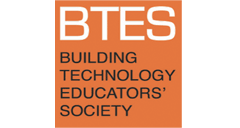Free-Form: The Adversarial Role of Materials in Automation
Author ORCID Identifier
DOI
https://doi.org/10.7275/bn2k-8c86
Abstract
Beyond allowing students to create physical models of complex geometry they would be unable to produce by hand, how can 3D-printing become relevant to studio and in practice? This paper will discuss the underlying dilemma confronting materials in studio education, particularly in the United States. Materials are, in many ways, foreign to the studio process, and this is compounded by the addition of a “foreign” technology, such as computer-aided manufacturing. Materials are more often seen as an aesthetic selection, and their adversarial role (the way in which materials can be unpredictable, counterproductive, and even belligerent) in construction is not essential or deep learning in the studio environment. Design-build education models often seek to confront this dilemma, particularly if they are more focused on research into materials and their fabrication, but even fewer programs utilize technology such as 3D-printing, again because it can be seen as difficult enough to teach students simple manufacturing processes. This paper will discuss five schools pioneering the potential of these tools: the ETH Zurich, the University of Stuttgart, MIT, the Bartlett, and Sci-Arc. While these schools have generated provocative research and compelling full-scale installations, there is also a distinct gap between this research and its dissemination/assimilation into mainstream practice. This paper seeks to understand the gap between possibility and pragmatics by studying these innovative schools’ methodologies and the ways in which their outcomes manifest in studio/practice. In summary, 3D-printing can offer the same potential as any other tool utilized in a design-build studio. It forces students to grapple with a material understanding they can choose to ignore on paper and in a virtual environment. By more literally understanding the conversion of a three-dimensional virtual solid into a sequence of coordinates (the g-code), the mystique of the technology is made equal to that of the wood stud.
Recommended Citation
Baudoin, Genevieve and Johnson, Bruce
(2021)
"Free-Form: The Adversarial Role of Materials in Automation,"
Building Technology Educator's Society: Vol. 2021, Article 16.
DOI: https://doi.org/10.7275/bn2k-8c86
Available at:
https://scholarworks.umass.edu/btes/vol2021/iss1/16

